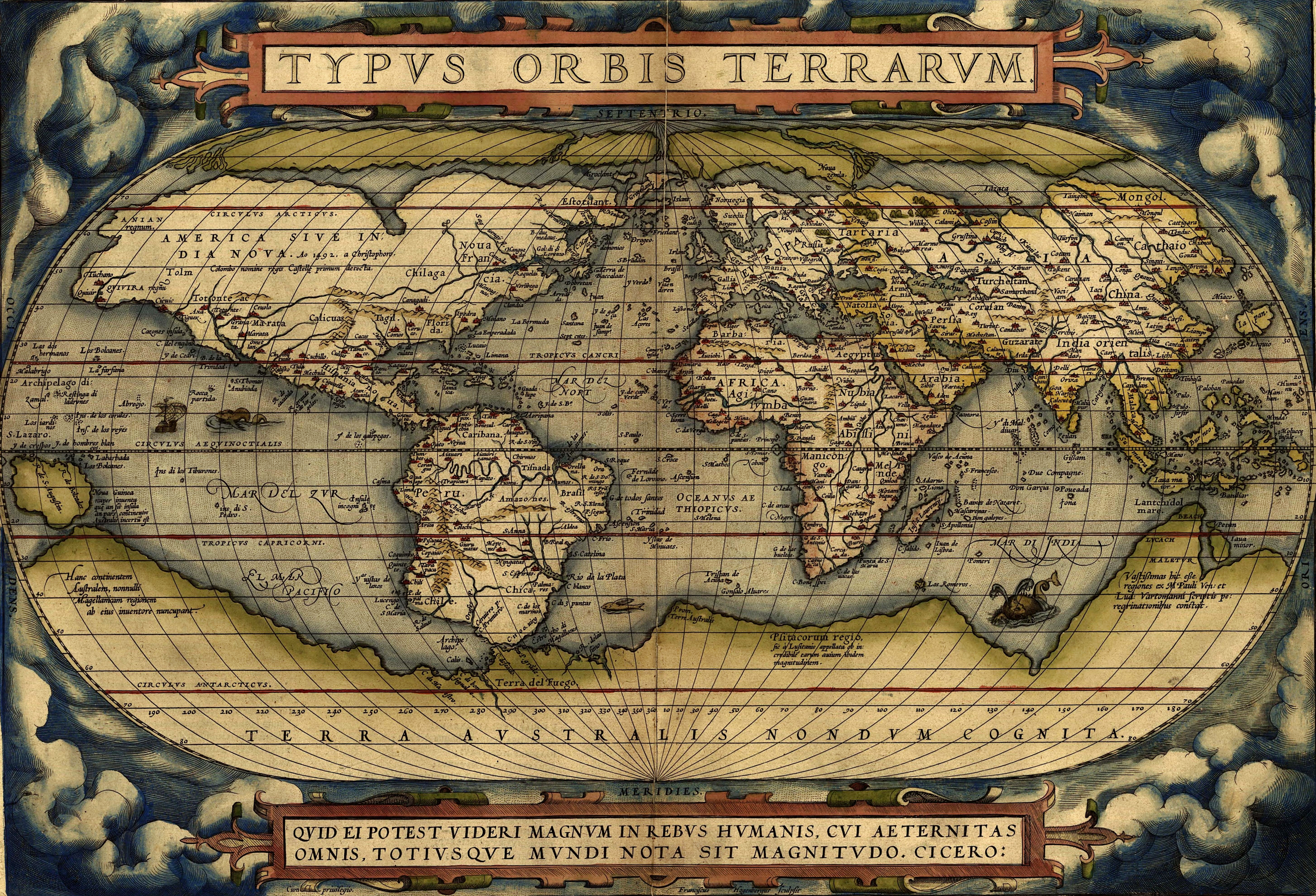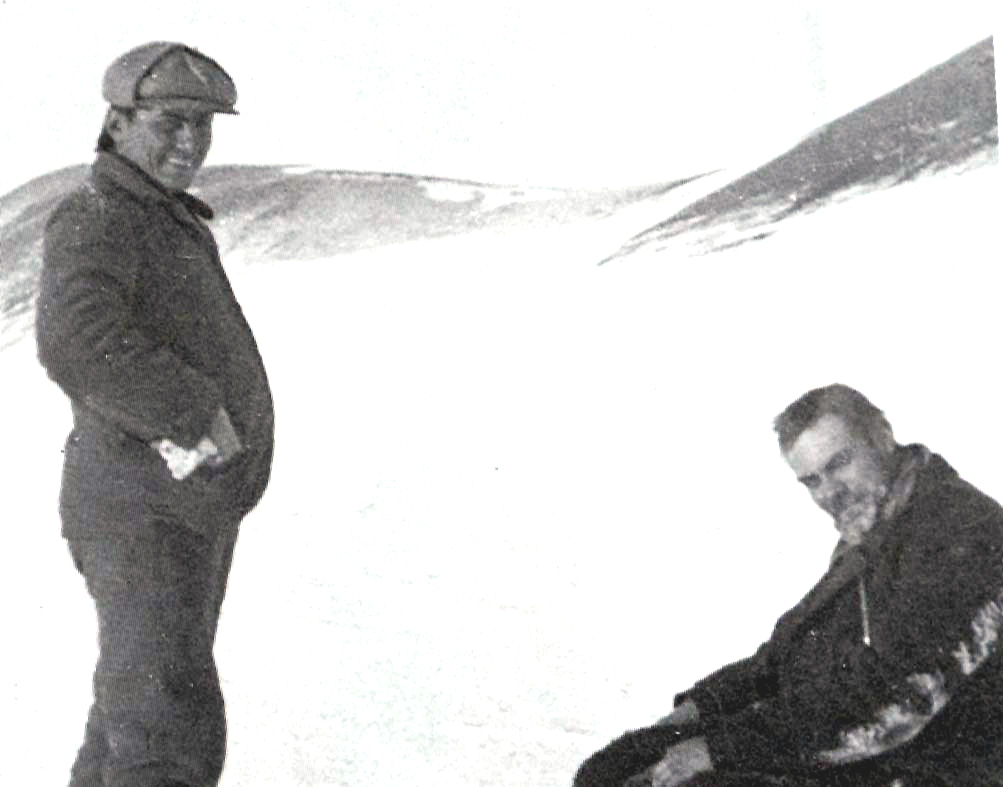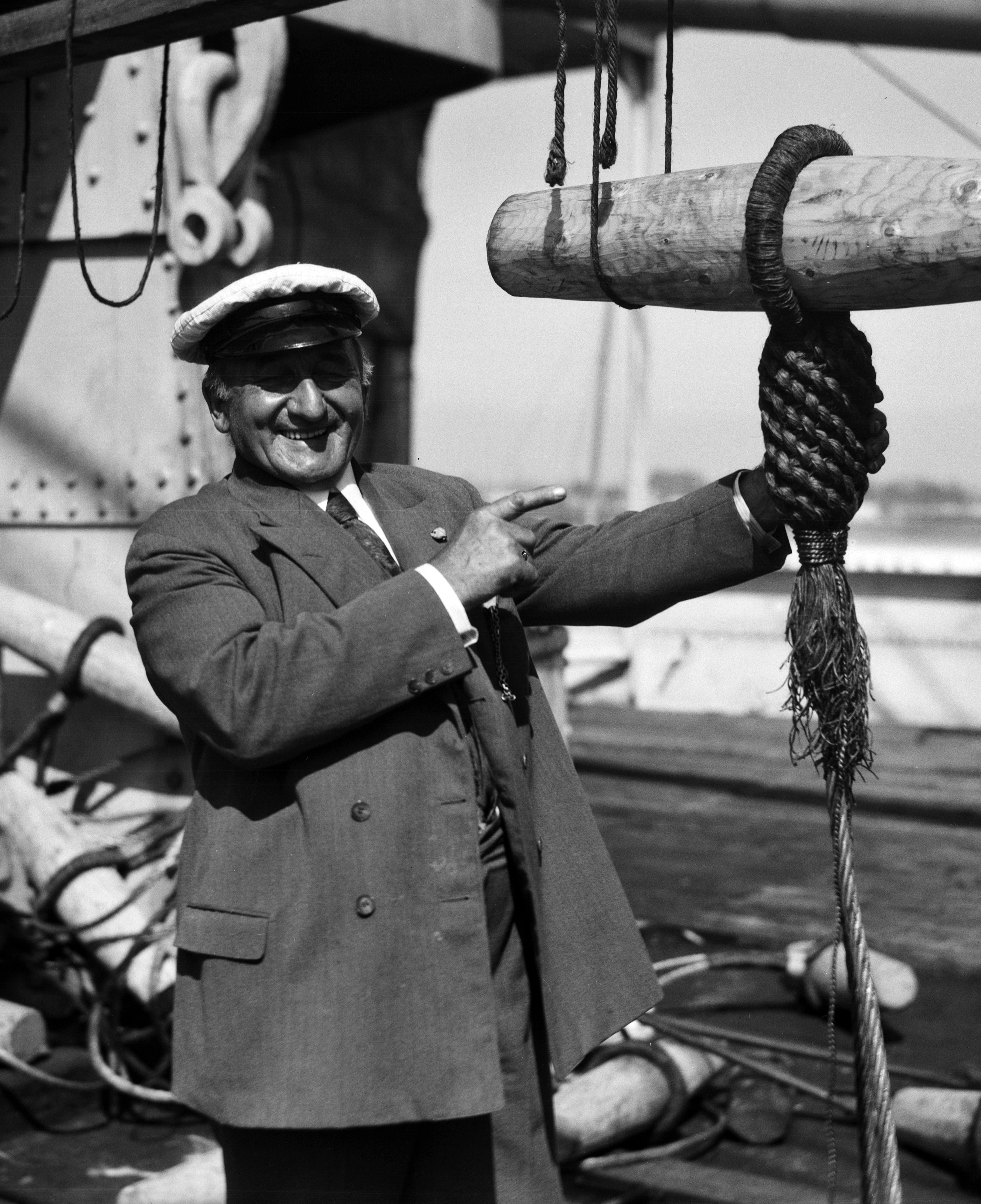|
Ronne Entrance
Ronne Entrance is a broad southwest entrance of the George VI Sound where it opens from the southeast portion of the Bellingshausen Sea at the southwest side of Alexander Island, Antarctica. The south side of the Monteverdi Peninsula occupies the north portion of the Ronne Entrance while Ellsworth Land occupies the southern portion of the entrance. The entrance receives much ice throughout the whole year mainly because the entrance protrudes eastward into the adjacent George VI Sound and the George VI Ice Shelf from the southwest section, the Ronne Entrance is also prone to ice flow from the Bach Ice Shelf (which separates the south side of the Beethoven Peninsula from the north side of the Monteverdi Peninsula) as well as receiving ice from the Wilkins Ice Shelf (mainly from the southernmost end of the ice shelf). There are a few islands situated within the Ronne Entrance, mainly in the southwest area. Some of these islands include the Eklund Islands, DeAtley Island, Spaatz Island, ... [...More Info...] [...Related Items...] OR: [Wikipedia] [Google] [Baidu] |
George VI Sound
George VI Sound or Canal Jorge VI or Canal Presidente Sarmiento or Canal Seaver or King George VI Sound or King George the Sixth Sound is a major bay/ fault depression, 300 miles (483 km) long and mainly covered by a permanent ice shelf. It is in the shape of the letter J without any upper bar. It lines the east and south shores of Alexander Island, separating it from the vestigial, quite small, Wordie Ice Shelf and Palmer Land (the south-west of the Antarctic Peninsula) and the north-facing "English Coast". A quite central point of it is . Various lakes adjoin; these receive large amounts of melt ice from the George VI Ice Shelf. These include Hodgson, Moutonee and Ablation Lakes. Several glaciers flow eastward into the sound from the east interior of Alexander Island, the vast majority of these glaciers are south of Planet Heights, where all of these glaciers are named after moons, satellites and planets of the Solar System in the same vein as the Heights, named by the ... [...More Info...] [...Related Items...] OR: [Wikipedia] [Google] [Baidu] |
Smyley Island
Smyley Island is an Antarctic island lying off the Antarctic Peninsula. The island is long and from wide, and lies about north of Case Island. It connects to the Stange Ice Shelf and is separated from Alexander Island by the Ronne Entrance. Smyley Island is one of the 27 islands of Palmer Land, Antarctica. Discovery and naming In 1939–1941 Smyley Island was first identified as a peninsula of mainland Antarctica by the United States Antarctic Service and was named ''Cape Smyley''. In 1968 it was identified as an island on a U.S. Geological Survey map. The island is named after Captain William H. Smyley, the American master of the sealing vessel ''Ohio'' during 1841–42. Important Bird Area A 497 ha site on fast ice near Scorseby Head, on the northern shore of the island, has been designated an Important Bird Area (IBA) by BirdLife International because it supports a breeding colony of some 6,000 emperor penguins, based on 2009 satellite imagery. See also * ... [...More Info...] [...Related Items...] OR: [Wikipedia] [Google] [Baidu] |
Chilean Antarctic Territory
The Chilean Antarctic Territory or Chilean Antarctica (Spanish: ''Territorio Chileno Antártico'', ''Antártica Chilena'') is the territory in Antarctica claimed by Chile. The Chilean Antarctic Territory ranges from 53° West to 90° West and from the South Pole to the 60° South parallel, partially overlapping the Argentine and British Antarctic claims. It is administered by the Cabo de Hornos municipality in the South American mainland. The territory claimed by Chile covers the South Shetland Islands, Antarctic Peninsula, called ''"O'Higgins Land"'' ''("Tierra de O'Higgins" in Spanish)'' in Chile, and adjacent islands, the Alexander Island, Charcot Island, and part of the Ellsworth Land, among others. It has an area of 1,250,257.6 km2. Its boundaries are defined by Decree 1747, issued on November 6, 1940, and published on June 21, 1955, the Ministry of Foreign Affairs established: Within Chilean territorial organization Antártica is the name of the commune that ad ... [...More Info...] [...Related Items...] OR: [Wikipedia] [Google] [Baidu] |
British Antarctic Territory
The British Antarctic Territory (BAT) is a sector of Antarctica claimed by the United Kingdom as one of its 14 British Overseas Territories, of which it is by far the largest by area. It comprises the region south of 60°S latitude and between longitudes and , forming a wedge shape that extends to the South Pole, overlapped by the Antarctic claims of Argentina (Argentine Antarctica) and Chile (Chilean Antarctic Territory). The Territory was formed on 3 March 1962, although the UK's claim to this portion of the Antarctic dates back to letters patent of 1908 and 1917. The area now covered by the Territory includes three regions which, before 1962, were administered by the British as separate dependencies of the Falkland Islands: Graham Land, the South Orkney Islands, and the South Shetland Islands. The United Kingdom's claim to the region has been suspended since the Antarctic Treaty came into force in 1961, Article 4 of which states "No acts or activities taking place ... [...More Info...] [...Related Items...] OR: [Wikipedia] [Google] [Baidu] |
Argentine Antarctica
Argentine Antarctica ( es, Antártida Argentina or Sector Antártico Argentino) is an area of Antarctica claimed by Argentina as part of its national territory. It consists of the Antarctic Peninsula and a triangular section extending to the South Pole, delimited by the 25th meridian west, 25° West and 74th meridian west, 74° West meridians and the 60th parallel south, 60° South parallel. This region overlaps the British Antarctic Territory, British and Chilean Antarctic Territory, Chilean claims in Antarctica. Argentina's Antarctic claim is based on its continued presence in the region since 1904, and the area's proximity to the South American continent. Argentina's claim to this area is subject to the Antarctic Treaty. Administratively, Argentine Antarctica is a Departments of Argentina, department of the Provinces of Argentina, province of Tierra del Fuego Province, Argentina, Tierra del Fuego, Antarctica, and South Atlantic Islands. The provincial authorities are based i ... [...More Info...] [...Related Items...] OR: [Wikipedia] [Google] [Baidu] |
Straits Of Antarctica
A strait is an oceanic landform connecting two seas or two other large areas of water. The surface water generally flows at the same elevation on both sides and through the strait in either direction. Most commonly, it is a narrow ocean channel that lies between two land masses. Some straits are not navigable, for example because they are either too narrow or too shallow, or because of an unnavigable reef or archipelago. Straits are also known to be loci for sediment accumulation. Usually, sand-size deposits occur on both the two opposite strait exits, forming subaqueous fans or deltas. Terminology The terms ''channel'', ''pass'', or ''passage'' can be synonymous and used interchangeably with ''strait'', although each is sometimes differentiated with varying senses. In Scotland, ''firth'' or ''Kyle'' are also sometimes used as synonyms for strait. Many straits are economically important. Straits can be important shipping routes and wars have been fought for control of them. ... [...More Info...] [...Related Items...] OR: [Wikipedia] [Google] [Baidu] |
Edith Ronne
Jackie Ronne (October 13, 1919 – June 14, 2009) was an American explorer of Antarctica and the first woman in the world to be a working member of an Antarctic expedition (1947–48). She is also the namesake of the Ronne Ice Shelf. Biography Born Edith Ann Maslin on October 13, 1919, in Baltimore, Maryland, Ronne spent her first two years in college at the College of Wooster in Wooster, Ohio, and received a degree in history from George Washington University. After college she worked in the U.S. State Department where she spent five years serving in several different positions from file clerk to International Information Specialist in the Near and Far Eastern Division of Cultural Affairs. She married Finn Ronne on March 18, 1941, and on the expedition of 1946–1948 that her husband commanded, she became the first American woman to set foot on the Antarctic continent. She and Jennie Darlington, the wife of the expedition's chief pilot, became the first women to overwinter i ... [...More Info...] [...Related Items...] OR: [Wikipedia] [Google] [Baidu] |
Byrd Antarctic Expedition
Richard Evelyn Byrd Jr. (October 25, 1888 – March 11, 1957) was an American naval officer and explorer. He was a recipient of the Medal of Honor, the highest honor for valor given by the United States, and was a pioneering American aviator, polar explorer, and organizer of polar logistics. Aircraft flights in which he served as a navigator and expedition leader crossed the Atlantic Ocean, a segment of the Arctic Ocean, and a segment of the Antarctic Plateau. Byrd said that his expeditions had been the first to reach both the North Pole and the South Pole by air. His belief to have reached the North Pole is disputed. He is also known for discovering Mount Sidley, the largest dormant volcano in Antarctica. Family Ancestry Byrd was born in Winchester, Virginia, the son of Esther Bolling (Flood) and Richard Evelyn Byrd Sr. He was a descendant of one of the First Families of Virginia. His ancestors include planter John Rolfe and his wife Pocahontas, William Byrd II of Westover Pl ... [...More Info...] [...Related Items...] OR: [Wikipedia] [Google] [Baidu] |
Martin Rønne
Martin Richard Rønne (September 15, 1861 – May 15, 1932) was a Norwegian sail maker and polar explorer. Rønne was born in Hamar. He took part in Roald Amundsen's expedition to Antarctica in 1910–1912, where he was one of those that remained behind on the ''Fram'' while the overwintering group disembarked in the Bay of Whales to prepare for the journey to the South Pole. From 1918 to 1920 he participated in Amundsen's expedition through the Northeast Passage in the '' Maud'', and in 1925 and 1926 he was in Ny-Ålesund, where he helped Amundsen plan his flying boat expedition. He also participated in Richard E. Byrd's first Antarctic expedition from 1928 to 1930. Rønne was the father of the polar explorer Finn Ronne, who emigrated to the United States in 1923. Rønne was awarded the South Pole Medal The South Pole Medal ( no, Sydpolsmedaljen) or Medal Commemorating the 1910–1911 ''Fram'' Expedition to the South Pole (''Medalje til erindring om "Frams" ekspedisjon til S ... [...More Info...] [...Related Items...] OR: [Wikipedia] [Google] [Baidu] |
Ronne Antarctic Research Expedition
The Ronne Antarctic Research Expedition (RARE) was an expedition from 1947–1948 which researched the area surrounding the head of the Weddell Sea in Antarctica. Background Finn Ronne led the RARE which was the final privately sponsored expedition from the United States and explored and mapped the last unknown coastline on earth and determined that the Weddell Sea and the Ross Sea were not connected. The expedition included Isaac Schlossbach, as second in command, who was to have Cape Schlossbach named after him. The expedition, based out of Stonington Island was the first to take women to over-winter. Ronne's wife, Edith Ronne was correspondent for the North American Newspaper Alliance for expedition and the chief pilot Darlington took his wife. Partial Listing of Discoveries * Mount Abrams - Named for Talbert Abrams, noted photogrammetric engineer * Mount Becker - Named for Ralph A. Becker, legal counsel who assisted in the formation of RARE * Mount Brundage - Named ... [...More Info...] [...Related Items...] OR: [Wikipedia] [Google] [Baidu] |
US Antarctic Service
The United States Antarctic Program (or USAP; formerly known as the United States Antarctic Research Program or USARP and the United States Antarctic Service or USAS) is an organization of the United States government which has presence in the Antarctica continent. Founded in 1959, the USAP manages all U.S. scientific research and related logistics in Antarctica as well as aboard ships in the Southern Ocean. United States Antarctic Program The United States established the U.S. Antarctic Research Program (USARP) in 1959—the name was later changed to the U.S. Antarctic Program—immediately following the success of the International Geophysical Year (IGY). Today, the National Science Foundation (NSF) has a Presidential Mandate to manage the United States Antarctic Program, through which it operates three year-round research stations and two research vessels, coordinates all U.S. science on the southernmost continent, and works with other federal agencies, the U.S. military, a ... [...More Info...] [...Related Items...] OR: [Wikipedia] [Google] [Baidu] |
Carl Eklund
Carl Robert Eklund (January 27, 1909 – November 3, 1962) was a leading American specialist in ornithology and geographic research in both the north and south polar regions. He was appointed as the first Scientific Station Leader of the Wilkes Station, Antarctica. Biography Carl Robert Eklund was born in Tomahawk, Wisconsin. His father immigrated from Sweden in 1888. His brother was Wisconsin journalist Laurence C. Eklund. He attended University of Wisconsin and received his B.A. degree in 1932 from Carleton College. He earned his M.S. degree in 1938 at Oregon State College. In 1959, the University of Maryland awarded him a Ph.D. in zoology and geography. During World War II he served as a major in the U.S. Army Air Force. In 1959, the University of Maryland awarded him a Ph.D. in zoology and geography. From 1939 to 1941 he served as ornithologist at the East Base of the U.S. Antarctic Service. This was the first modern US. Government-sponsored expedition to Antarctica, and t ... [...More Info...] [...Related Items...] OR: [Wikipedia] [Google] [Baidu] |



